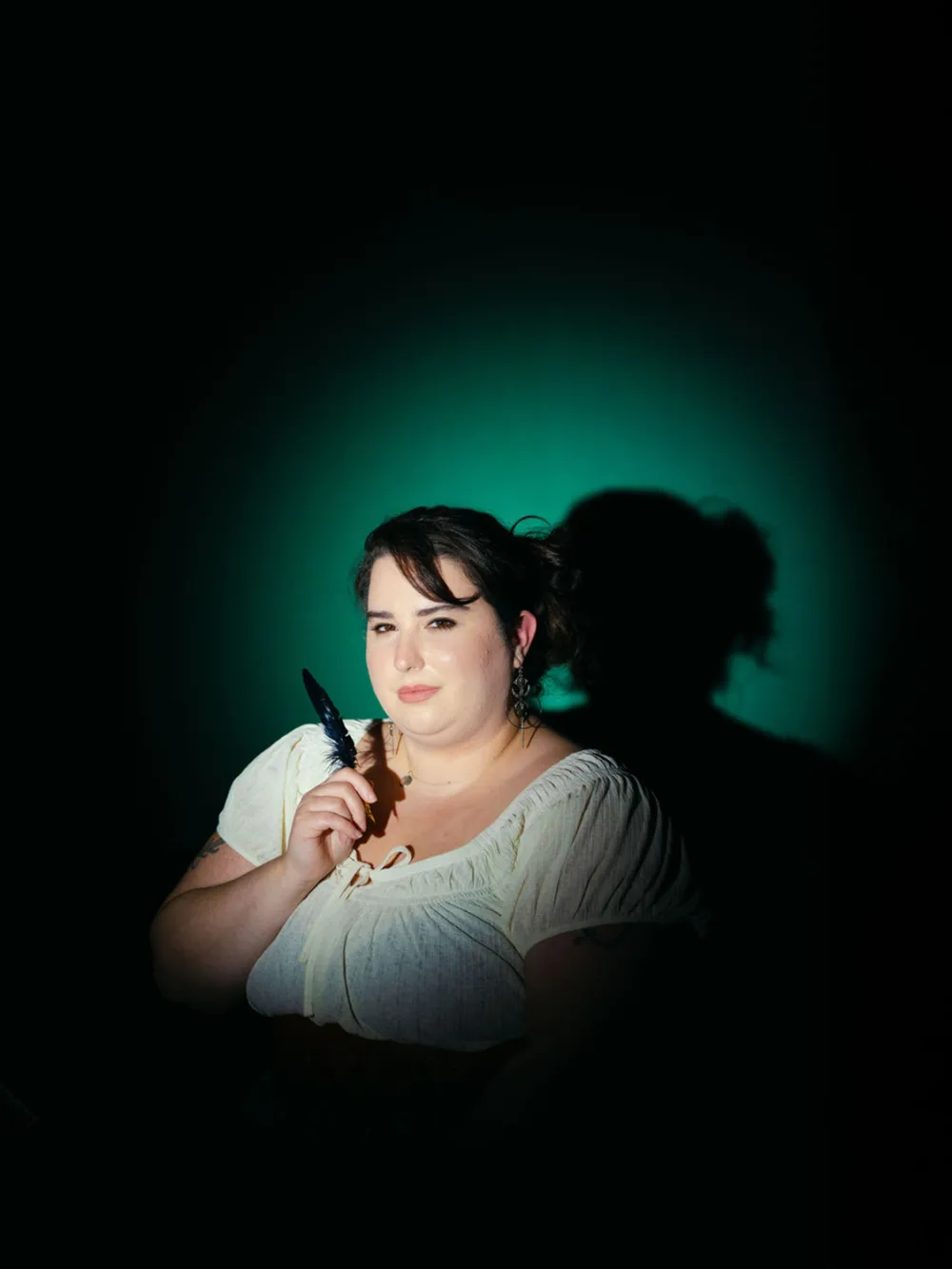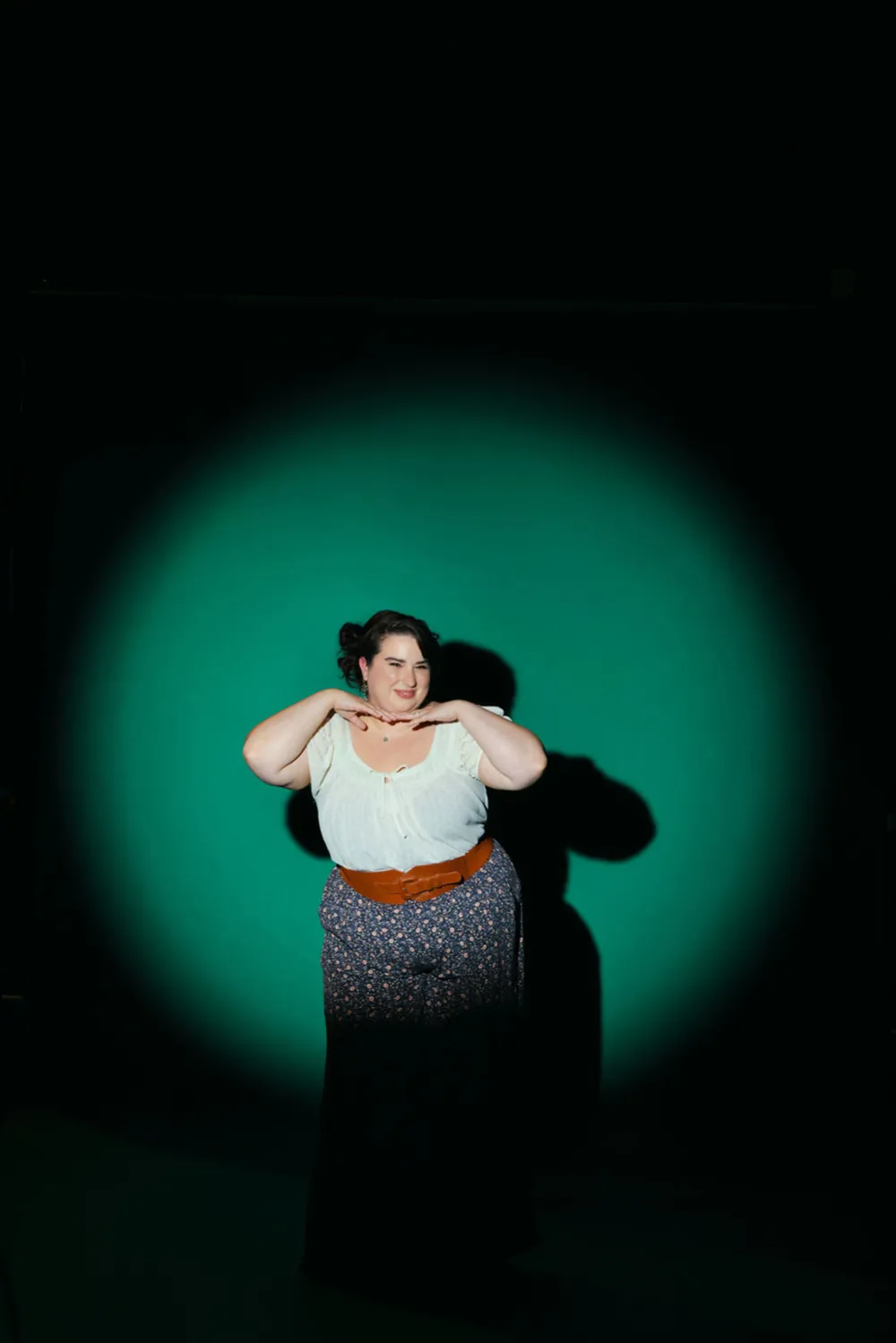Staff Creatives: Katy Wiggins

Creativity runs high among College of Fine Arts staff members, both in their day jobs in the college supporting our research and educational mission and in their personal lives. The college has an unusually high number of practicing artists, musicians and performers — many of them alumni — on our teams.
Katy Wiggins is a marketing specialist in the Department of Theatre and Dance.
How many years have you worked in the College of Fine Arts?
I started in January.
Describe your creative practice.
I frequently perform short- and long-form improv at The Hideout Theatre, and I also write and produce several podcasts, including the ghost-storytelling comedy Scary Stories from Camp Roanoke and the ghost story fiction anthology Nearly Departed.
How did you get started in your creative practice?
I started podcasting when I was in college in 2017 studying English and studio art at Texas State University. I didn’t have an outlet for performance at the time, which is my first love, and once I started really listening to podcasts in earnest I thought, “This would be so fun to make. I’ve got to get in on this.” I had experience in college radio and audio production and a lifelong intense obsession with ghost stories, so I grabbed my best friend and created the universe of Camp Roanoke to tell true ghost stories. I couldn’t get a live audience, so I found a digital one. I graduated and moved to NYC, where I studied longform improv at UCB and musical improv at the Magnet Theater. As I kept my podcast going, I became known a bit as a woman who knew about spooky stuff, and that led me to be part of an all-woman improv troupe called Final Girl that did improvised horror movies in the basement of a bar once a month.
During the pandemic, my fiancé and I moved to Austin, his hometown, and I began taking improv classes at The Hideout here, which I could immediately tell was incredibly different than the improv education I had gotten in New York. I was cast in my first show, an improvised mockumentary in the style of What We Do in the Shadows, and the people and the style of improv at The Hideout just fit me like a glove. I’ve directed my own show (the sold-out Crucibullsh!t) and have been in tons of shows with The Hideout including their yearly improvised Dickens show Bah! Humbug, their improvised Sweeney Todd musical Attend the Tale and their weekly Big Bash! short form show. Outside of the Hideout, I’ve also been a member of Jane Austin Improv.

What does a typical day look like when you’re balancing both your work and creative passions?
I work part-time, four days instead of five, to allow time and energy for my creative projects. So I typically do my writing and researching uninterrupted on Fridays when I don’t work. During the week, usually Wednesdays, I’m going straight from work to rehearsal downtown if I’m in a show at the Hideout.
Any advice for students as they think about their professional pathways?
I think knowing yourself is so important. How much energy you have, how much pressure you can tolerate, the kinds of tasks you like to do the most. All of these things impact the kind of work that would feel most satisfying and sustainable to do. You have to accept the parts of yourself that cannot change and embrace a path that you can thrive in. There are things we feel like we should be doing to consider ourselves an artist or writer or actor, but those lifestyles don’t work for everyone. For me, working part time in a position that is stable and enjoyable and uses my creative skills frees me up to create in exactly the way I want on my own time, at exactly the pace I want, always keeping joy at the center of what I’m doing without financial stress.
How do you define success as an artist? How has that definition evolved over time?
When I was younger, I would have defined being a successful writer or actor from external signifiers. Are you a published author? Are you famous? But I experienced a shift after I burned myself out from suffering so much creative rejection: I don’t have to wait for anyone or anything to make the art I want to make. No one does. I wanted to do it now, before someone had to say “yes” to me, so I did and I do. Being a successful artist is being someone who is making art.
I’ve often heard the story “I always wanted to be a writer/painter/actor, but…” and I always want to jump up and down in frustration because if it’s the act of writing or painting or performing that you truly enjoy, and not the romanticized notion of being an artist and the accolades that go with it, then there are ways to make those things be major parts of your life right now. It all comes down to knowing yourself. I know that autonomy is incredibly important to me. I know I fundamentally reject writing to fit the needs of what’s most marketable and only being able to play roles in my “type.” So I’ve built a life for myself to write the stories I want to write, perform the wild breadth of roles I want to create through improv and be able to afford all my supplies and retire.

